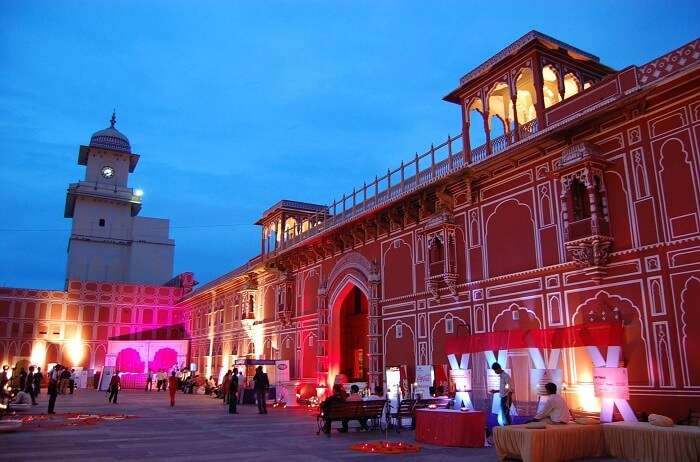A Detailed Guide to Jaipur’s Enchanting City Palace
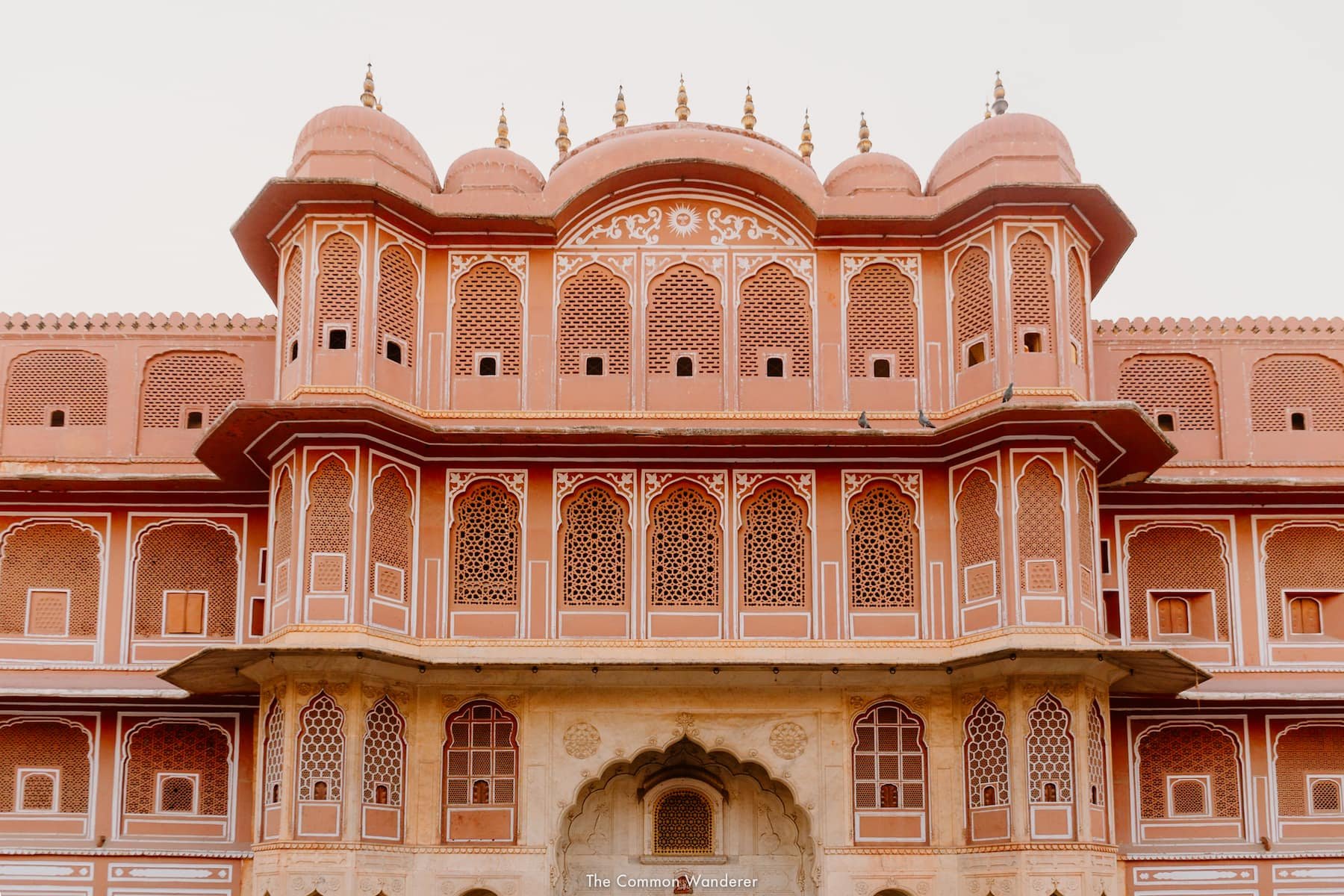
This City Palace guide provides a detailed overview of the complex, including what to see, entry fees, the historical context, and essential planning information to help you enjoy the best experience possible.
Elegant, enchanting, ornate; there are many ways to describe Jaipur’s City Palace, however, mesmersing sums it up perfectly.
Set in the heart of Jaipur’s walled Pink City, the City Palace is a showcase of opulent beauty and an aesthetically pleasing blend of some remarkable Rajput and Mughal architecture.
Every inch of this palace is mesmerising (like much of Jaipur, to be honest), made of red and pink sandstone, glistening white marble, antique artwork, intricate details and kaleidoscopic patterns.
City Palace features a charming seven-story citadel, antique museum, vast courtyards, luxurious rooms, perfectly manicured gardens and enchanting archways — all well-curated and built to perfection.
The most striking part of the City Palace of Jaipur is the iconic and oft-photographed Pritam Niwas Chowk, the globally recognised gates replete with showered in the prettiest colours and artistic patterns!
To this day, City Palace is home to the present royal family of Jaipur, where they exclusively reside inside the Chandra Mahal complex. A colourful, regal wonderland.
If you’ve ever wanted to take a peek into the 18th-century tales of Jaipur’s royal family and their life once lived, without a doubt, you need to add Jaipur’s City Palace to the never-ending list of must-see attractions in Rajasthan.
This City Palace guide provides a detailed overview of the complex, including what to see, entry fees, the historical context, and essential planning information to help you enjoy the best experience possible.
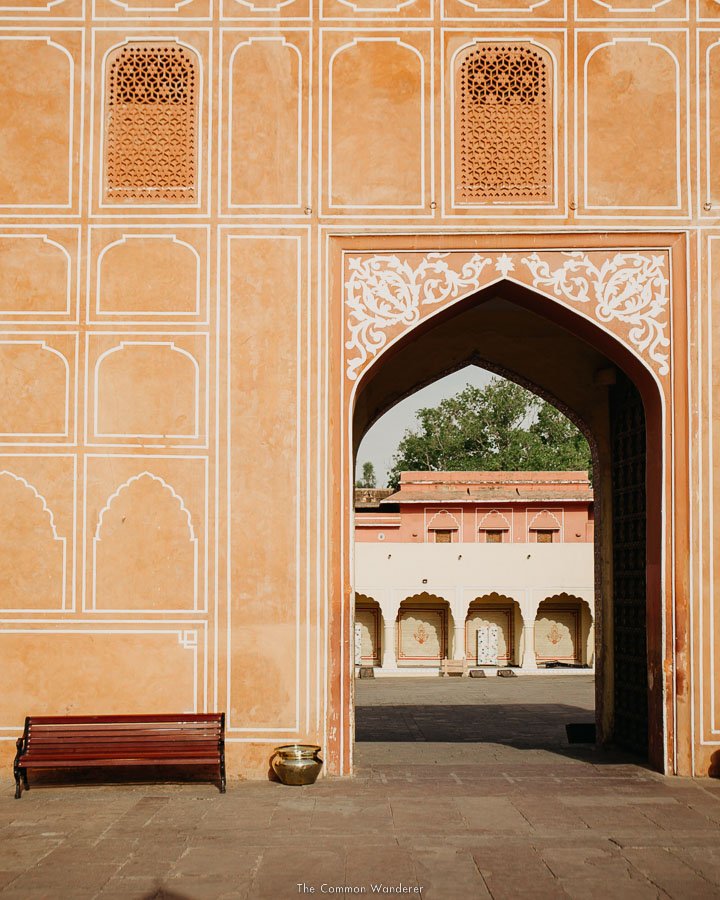
A LITTLE HISTORY OF JAIPUR CITY PALACE
The grand City Palace of Jaipur was built between 1729 — 1732 under the rule of Maharaja Sawai Jai Singh, alongside the city of Jaipur.
The town of Amer and the majestic Amber Fort were once the capital and home to the reigning royal family, however, as the population grew and water became scarce, the Maharaja decided to discover a new capital, and boom, hand in hand the City Palace and city of Jaipur were born.
Two extremely talented architects were to thank for the lavish design of the palace; a Bengali gentleman named Vidhyadhar Bhattacharya, and a British sir named Samuel Swinton Jacob — the masterminds of the architectural marvels of both the City Palace and the entire city of Jaipur!
Fun fact: If you’ve ever wondered how Jaipur got its nickname the ‘Pink City,’ then you’ve come to the right place. Once upon a time, around the independence of India, King Edward VII (then Prince of Wales,) was due to visit India.
All in a bid to impress the Prince, Maharaja Sawai Jai Singh decided to give the city a bit of a spruce up and elaborately had the city completely painted in pink — how crazy is that!
BOOK | This popular City Palace, Hawa Mahal and Jantar Mantar guided tour, or this photography tour of Jaipur
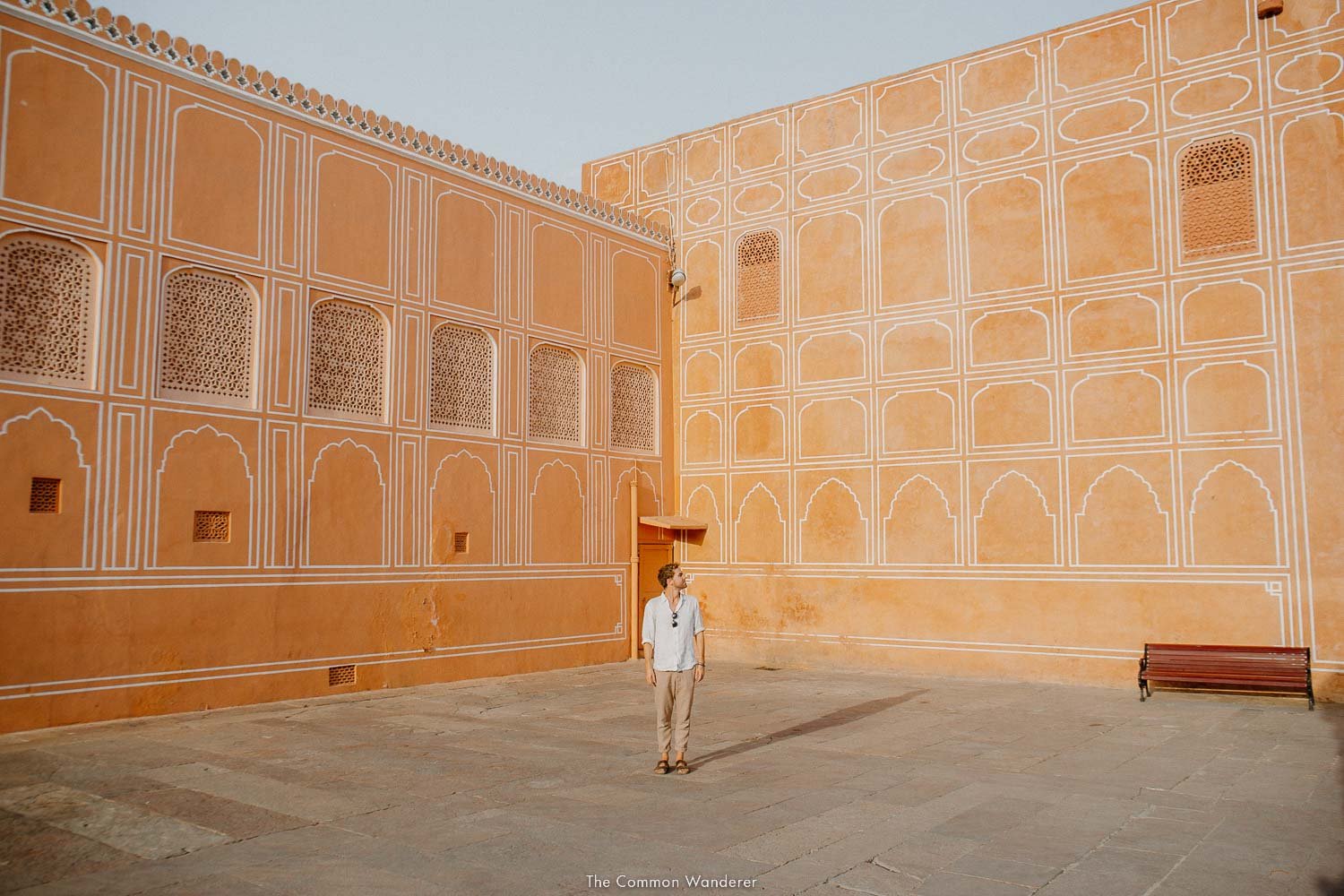
WHAT TO SEE IN JAIPUR CITY PALACE
Being the extravagant complex The City Palace complex is an extravagant complex with lots to see and do, so we’ve whittled down the must-see sights to help you enjoy the best visit possible.
MUBARAK MAHAL
As you enter through Virendra Pol and into the first courtyard, you’ll be greeted by a creamy, stand-alone haveli called Mubarak Mahal, meaning ‘welcome place’ — once the reception hall and also the last addition to the City Palace.
Decked with striking carvings, intricately designed arches and ornamental pillars, this building is one to cast your eyes on.
Today, Mubarak Mahal houses part of the Maharaja Sawai Man Singh II museum, showcasing an impressive collection of elaborate textiles belonging to the royals.
Silk sarees, embroidered shawls and ethereal dresses of the princesses are displayed ever so beautifully here.
However, the most impressive display is well and truly the wonderfully huge regal costume, once worn by Maharaja Sawai Madho Singh. Wildly he had 108 wives and trousers that were almost 1.2 meters wide.
Welcome to medieval India, ladies and gents!
Note | No photography is allowed inside the museum
RAJENDRA POL
To the right of Mubarak Mahal is an enchanting marble gateway, Rajendra Pol. Follow through this beauty to enter the main courtyard of Diwan — E — Khas, where the real show begins.
This isn’t any old gateway, though. The exterior shows off the tiniest of carvings, prettiest of balconies and grandest of brass-studded doors.
Two wonderfully sculpted marble elephants stand tall on either side of the pathway, and palace guards looking dapper carry charming white suits, traditional red turbans, and sport perfectly twisted mo’s.
Don’t be afraid to ask these kind sir’s for a friendly photo if you wish!
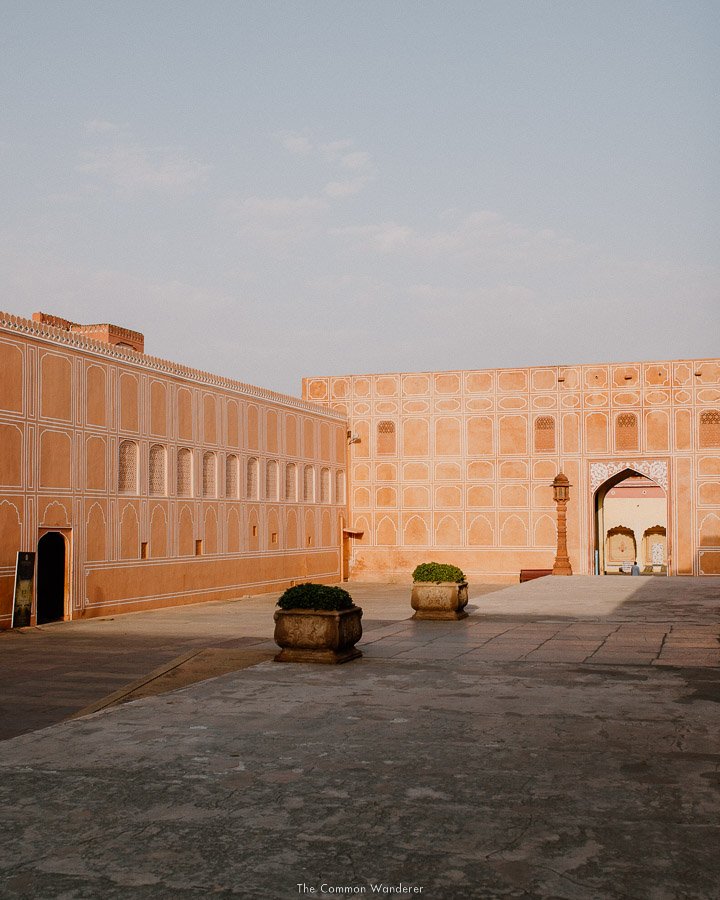
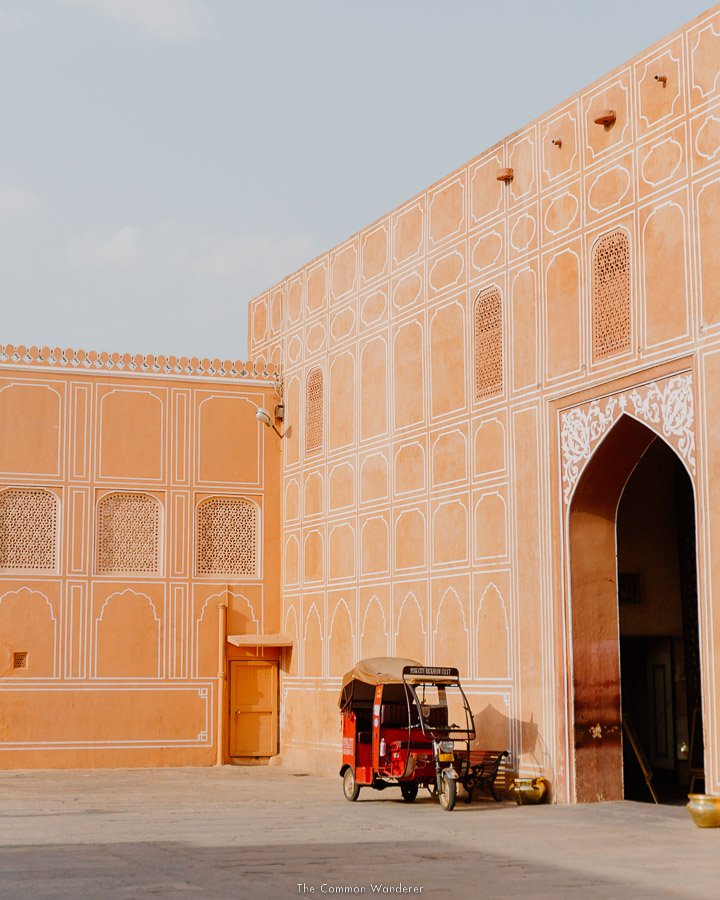
DIWAN — E — KHAS
When entering Diwan — E — Khas, it seriously feels like you’ve walked onto a set of some gorgeous romantic movie. From its dripping crystal chandeliers hanging ever so elegantly to the immaculate marble floors and luxurious red stone archways — this is a must-see.
The opulent pink pavilion perched in the middle of the courtyard is known as the king’s hall of private audience. It still holds importance today as it was the hall where major religious rituals and festivals took place.
The drawcard to Diwan — E — Khas is the display of two large and legendary silver Gangajelies, or water urns, that back in the day carried two months’ worth of holy Ganga water for Maharaja Sawai Madho Singh, on his visit all the way to London.
These weigh 345 kgs when empty and are officially the biggest sterling silver urns in the world, according to the Guinness Book of Records.
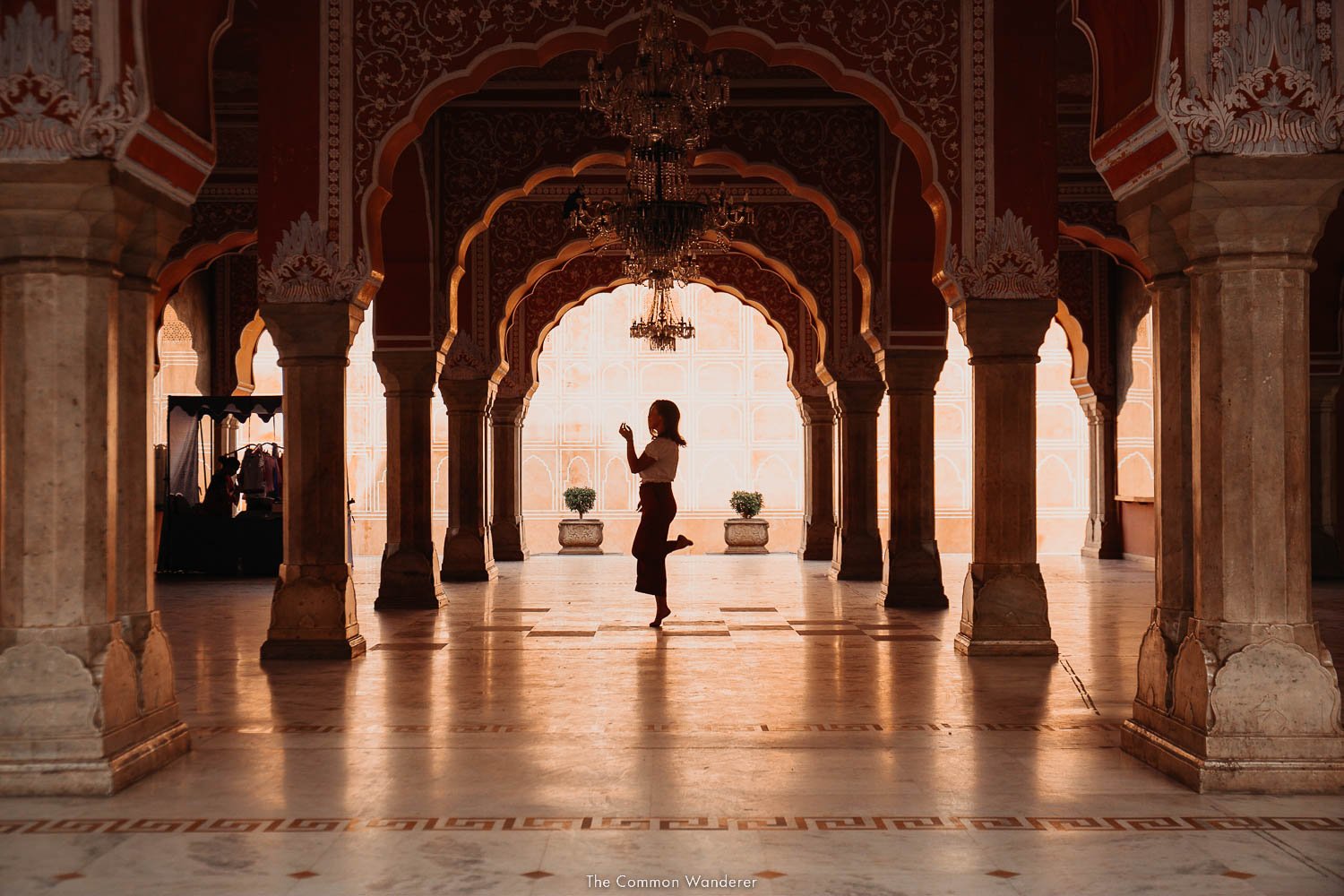
PRITAM NIWAS CHOWK
Ridhi Sidhi Pol gate leads to an inner courtyard called Pritam Niwas Chowk, or ‘courtyard of the beloved,’ which is literally something from an Instagrammers wildest dreams.
As you enter this unique enclosed courtyard you’ll be greeted with four elaborate brass doors that are bound to catch your eye. Bursting with punchy colours and decked in bejewelled motifs, these gates are quite simply, picture-perfect.
Everyone flocks to this courtyard in Jaipur’s City Palace, so expect it to be crowded and teeming with photoshoots, but for a good reason.
The four gates symbolise each of the four seasons and honour the Hindu Gods — Lotus Gate: represents summer and is dedicated to Lord Shiva, Peacock Gate: Autumn and Lord Vishnu, Rose Gate: Winter and Goddess Devi, and Leheriya Gate: Spring and Lord Ganesha.
Pritam Niwas Chowk was originally used for royal dance performances during festive occasions, with dancers twirling in the courtyard below and singers performing on the balconies overhead.
Note | Please, respect your surroundings. We’ve heard some of these doors have been damaged by unruly tourists and their selfie sticks. As always, practice the responsible tourism mantra of leaving things better than you found them.
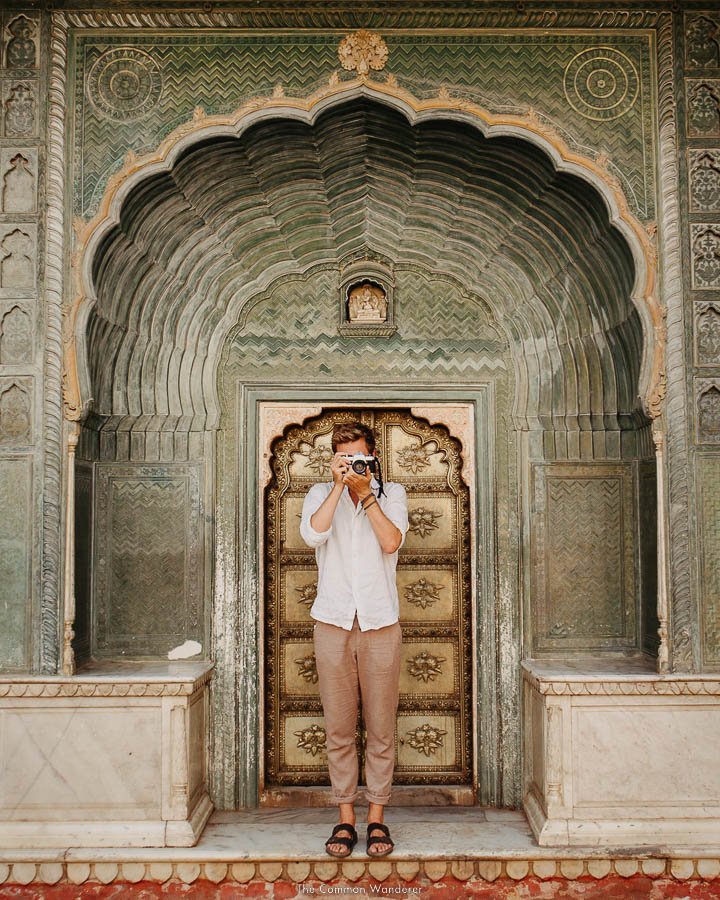
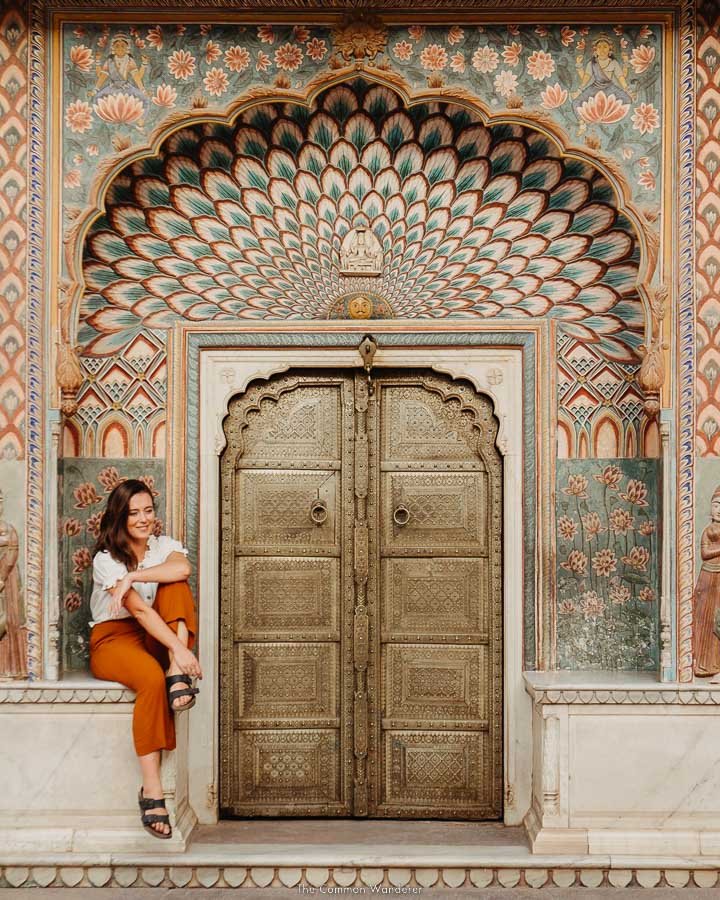
CHANDRA MAHAL | SUKH NIWAS / RANG MANDIR / SHOBHA NIWAS
Sprawling over seven levels, the lavish Chandra Mahal building, or ‘Moon Palace,’ features a collection of treasured private rooms and picturesque views over the Pink City of Jaipur. Part of the building is where the present royal family resides, and other parts happen to be private hotspots of Jaipur’s City Palace.
The first floor is where you’ll find the main part of the Maharaja Sawai Man Singh II museum, home to a rare collection of royal family artefacts. Everything from old weaponry, carpets and manuscripts, to blue pottery, block prints and antique Indian artwork.
A super recognisable spot is the Sukh Niwas, commonly known as the ‘blue room,’ which is named after Maharaja Sawai Jai Singh’s wife. This room is a fully furnished royal dining room on the second floor, recognisably bright blue in colour with gorgeous white detailing.
The third and fourth floors are home to Rang Mandir ‘The Mirror Room,’ and Shobha Niwas ‘Hall of Beauty’ respectively. Check out these rooms to take in the amazing mirror work, embellished tiles and gold leaf detailing that graces each and every wall. So very fancy!
Chavi Niwas is on the fifth floor and used to be the Maharaja’s resting place, while Shri Niwas covers the sixth.
Lastly, the seventh and top floor is called Mukut Niwas and is known as the crown of the palace. This is where the flags are hoisted into the sky, stating that the Maharaja is home, and where you can catch a glimpse over the city.
Note | The first-floor museum is the only part of Chandra Mahal that you can enter on a standard ticket. The upper rooms are hidden in a private part of City Palace and can only be visited when purchasing an additional ticket called ‘Royal Splendour’ (see information below). Be prepared to fork out extra if you wish to explore as the pricing is a tad bit hefty!
Читайте далее:BOOK | This popular City Palace, Hawa Mahal and Jantar Mantar guided tour, or this photography tour of Jaipur

